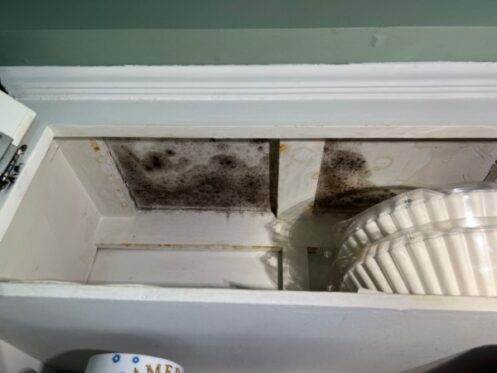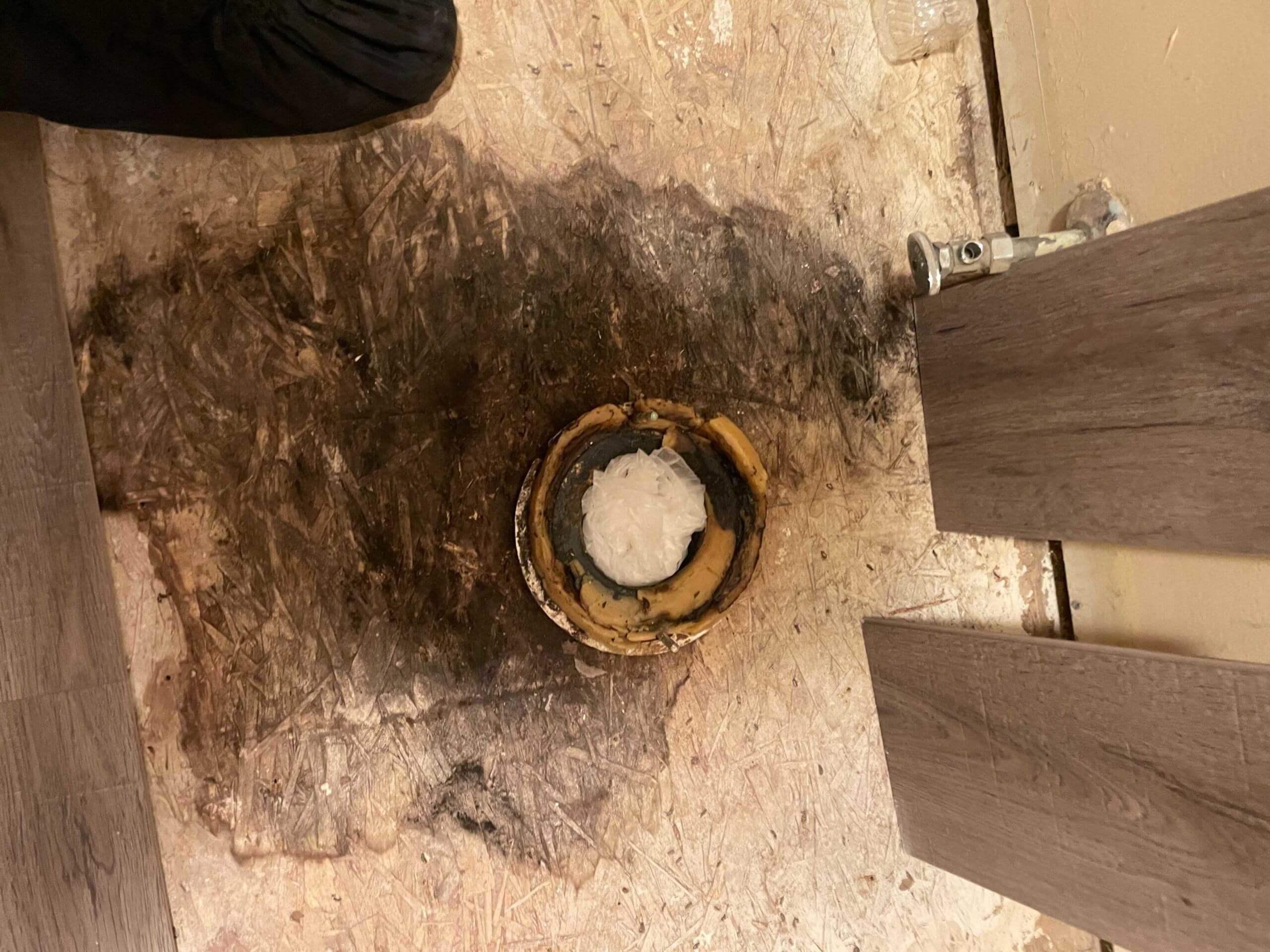The bathrooms in your Lake Zurich, IL home are prime breeding grounds for mold. Warm and perpetually moist, these spaces require extra diligence in cleaning, drying, and inspecting for fast-developing issues. Fortunately, there are eight easy ways to make sure that your bathrooms stay mold-free all of the time.
1. Always Use Your Exhaust Fan
All bathrooms are designed with built-in ventilation. If your home is up to code, each of its bathrooms has a functional exhaust fan, a functional window, or both. There must be at least one way to reliably route excess moisture out of bathrooms following hot baths, showers, or other steamy activities.
However, having an exhaust fan will do you absolutely no good if you aren’t using it correctly. Whether you’re blow-drying your hair, taking a hot soak, or hanging up a damp swimsuit, this fan should be on. If you have a window in place of an exhaust fan, make sure to open it and keep it open until the room is completely dry. It’s also a good idea to have your exhaust fan inspected and cleaned at least once each year.
2. Use a Squeegee to Remove Excess Water From the Shower
To limit the amount of work that your exhaust fan must do, use a squeegee to remove excess water from your tub surround and shower enclosure. This is a simple, effective tool that can be hung in your shower for quick, easy clean-up.
You should also organize your in-shower self-care products and cleaning products so that they aren’t trapping standing water behind them. You can install a hanging shower caddy for body wash and shampoo bottles, and use wall-mounted hooks for loofahs, scrunchies, and back brushes. Otherwise, water that gets trapped in or around these items will eventually evaporate and create a moist, humid environment. Worse still, they’ll likely do so long after your bathroom window has been closed or your exhaust fan is turned off.
3. Hang Your Shower Curtain or Open Your Shower Enclosure
Shower curtains and shower enclosures can trap large amounts of water if they aren’t aired out. Leave your shower enclosure open after you’ve squeegeed the surround. If you have a shower curtain, open it up, air it out, and then push it back so that air can move through the tub and shower area.
Shower curtains should also be changed on a regular basis. If you’ve had the same shower curtain in place for several months, it’s probably harboring mold and other germs. Plastic curtain liners should be changed every three to six months. Fabric shower curtains should be taken down and washed monthly.
4. Wash Old, Musty Towels
If your bath towels always seem to have a dank, musty smell, this is a sign that you have too much moisture in your bathroom. It means that the room is too humid to let these linens dry fully. Rank-smelling linens should be removed and washed right away. Damp washcloths and damp hand towels should be washed before they ever develop strong odors.
You should also take action to correct humidity problems whenever your linens send out odorous alerts. This is your cue to clean and use your exhaust fan more often or to keep your bathroom windows open longer. If these measures don’t help, and if you’ve got signs of excess humidity in other household areas, consider having a whole-house dehumidifier installed.
5. Use Laundry Racks With Caution
Laundry racks are a cost-effective and eco-friendly alternative to clothes dryers. Best of all, they don’t subject delicate items to the same wear and tear that high-heat drying cycles do. Although many laundry racks are built for outdoor use, some units are made specifically for use inside of the home. However, it’s important to remember that when your clothes dry on these racks, the moisture that they contain isn’t simply disappearing.
Never set a laundry rack up in your bathroom. If you absolutely have to, open the bathroom window and keep it open until both your clothing and the room itself are completely dry. If you have a smaller home and are using a laundry rack in any other area, open up two or more windows and keep the entire living environment well-ventilated. Moreover, although your towel rack is a great place to hang a partially damp swimsuit, all truly wet clothing should be hung outdoors or placed in a clothes dryer rather than dried in your bathroom.
6. Have Your Tile Grout Resealed at Regular Intervals
Unsealed tile grout can harbor mold. If you have tile floors or a tiled shower, you should have your grout resealed on a regular schedule. Tile grout in high-traffic bathrooms should be inspected and sealed every six to 12 months. Grout in bathrooms that are used much less often should be resealed every one to two years. Bathroom tile grout can last between eight and 16 years, but it must be inspected for signs of mold and significant deterioration annually.
7. Don’t Try to Treat the Mold You Do See With Bleach
The biggest cause of severe mold issues in bathrooms is insufficient mold treatment. It’s not uncommon to find mold in shower corners, behind toilets, or in other poorly ventilated or hard-to-reach places. Unfortunately, many homeowners confidently use chlorine bleach for a quick fix.
Misleading information on bleach labels convinces many consumers that bleach products are always effective mold killers. When paired with the rapid, whitening effects of bleach, claims of 99.9% effectiveness are easy to believe.
Chlorine bleach can only kill surface mold. Thus, bleach is only an effective mold treatment when used on sealed and completely non-porous surfaces. When mold forms on any porous surface, it immediately establishes intricate networks of roots. These root systems travel deep into porous materials and cause surface mold to reappear within just one to two days of treatment. If you’ve got recurring mold problems in your bathrooms that only have a very short-term response to bleach, you should contact a professional right away.
8. Take Care of Leaks
Effective mold treatment always starts with a search for the underlying cause. When homes are regularly cleaned and aren’t in a state of general disrepair, avoiding mold problems isn’t a challenge. Mold is most often the result of:
- Unchecked leaks
- Flood events
- Substandard cleaning
- Poor ventilation
- Insufficient humidity control
Sanitizing moldy surfaces without first resolving the problem that has ultimately created them will invariably result in a swift return. In your bathrooms, even a leaky tap can set the stage for mold issues. If you have torn or missing caulking around your tub or shower surround, or a constantly dripping faucet, schedule repairs right away. Anything that’s constantly adding moisture to a bathroom during times when moisture isn’t being actively removed will eventually result in pervasive mold growth.
At Pur360, we take a highly targeted approach to mold remediation. We offer mold testing, odor removal, and ultraviolet sanitization. Our other services include carpet removal and disposal, drywall removal and repair, light painting, and attic stain removal. We are headquartered in Lake Zurich, IL but have offices in Florida, Texas, Wisconsin, and Georgia. If you’re currently battling mold in your home, call us now.



